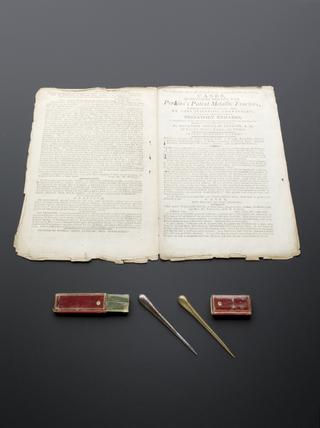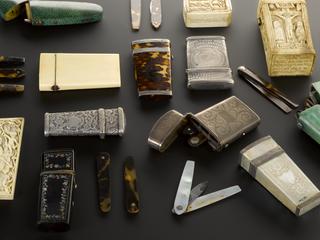

Pewter enema syringe, self administering, piston action, in wooden case, by J. Millikin, London, 1822 to 1846
Enema syringes vary in shape and material but they are all intended to introduce liquids such as medications or purgatives into the body via the rectum – a once very common medical procedure. This pewter example is shaped so as to allow the enema to be self-administered. The bottom section of the syringe can be removed and replaced by a small cap – presumably to allow a full syringe to be transported without leaking its contents.
In terms of administering therapeutic medicines, enema syringes were widely used until the mid 1850s, after which the hypodermic syringe increasingly became the drug-delivery system of choice.
Details
- Category:
- Therapeutics
- Collection:
- Sir Henry Wellcome's Museum Collection
- Object Number:
- A606198
- Materials:
- syringe, pewter, syringe, brass, case, wood and case, brass
- Measurements:
-
overall: 45 mm x 233 mm x 240 mm, .62kg
case: 51 mm x 255 mm x 75 mm, .24kg
- type:
- enema syringe



